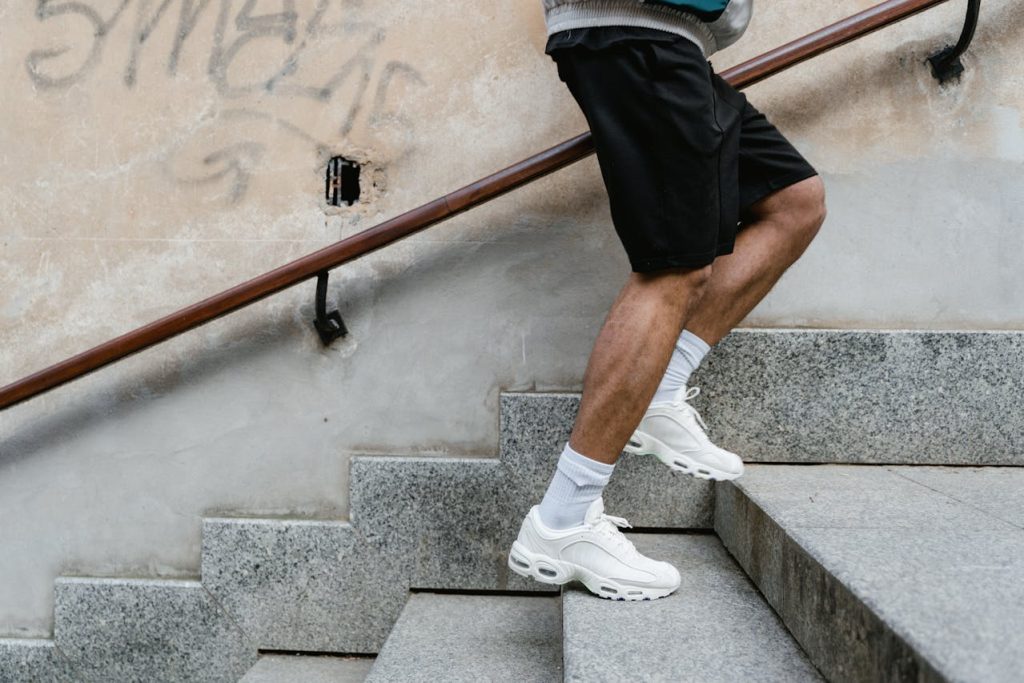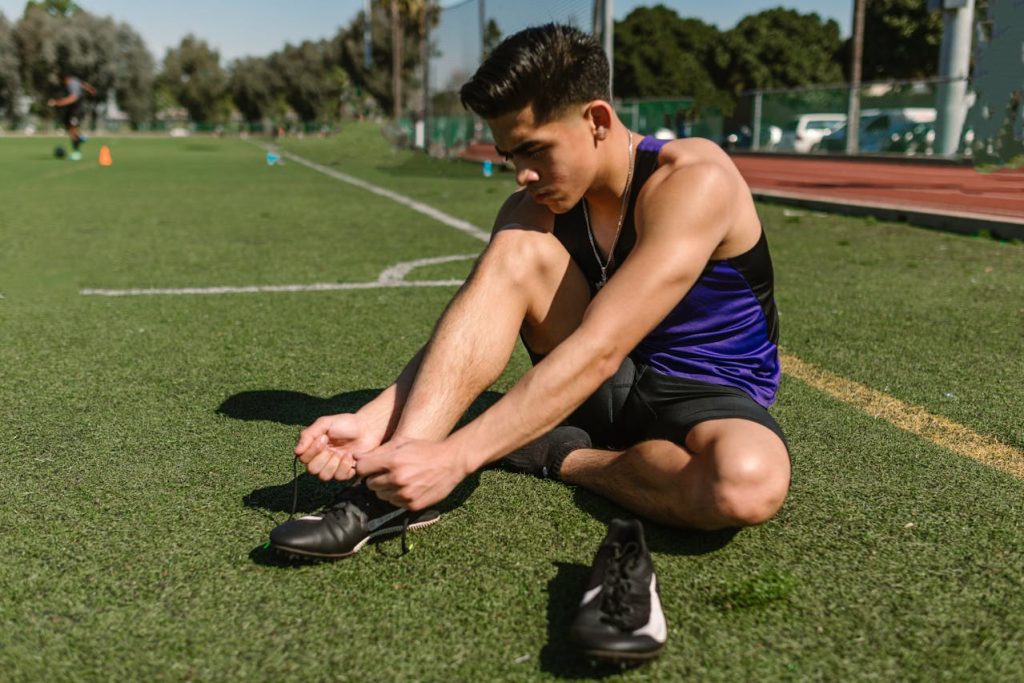Chronic foot pain can have a significant impact on your daily life, preventing you from engaging in physical activities, limiting your mobility, and contributing to discomfort in other parts of your body. While occasional foot pain may be expected after a long day, persistent or recurring pain could indicate underlying problems with your foot structure or biomechanics. Orthotics—custom-made or over-the-counter shoe inserts—can offer much-needed support, relieve pain, and correct alignment issues. But how do you know if you need orthotics? In this article, we will explore each of these signs in depth, discussing how they relate to foot mechanics, how orthotics can help, and real-world examples of individuals who have benefited from orthotics.
1. Chronic Heel Pain (Plantar Fasciitis)
Plantar fasciitis is one of the most common causes of heel pain, particularly in adults. The condition occurs when the thick band of tissue on the bottom of your foot, called the plantar fascia, becomes inflamed or irritated. This tissue connects your heel bone to your toes and plays a critical role in supporting your foot’s arch and absorbing shock as you walk.
Symptoms:
- Sharp, stabbing pain near the heel, especially when taking your first steps in the morning.
- Pain that worsens after long periods of standing, walking, or running.
- Tenderness and stiffness in the bottom of your foot, particularly after resting.
Why It Happens:
Plantar fasciitis is often the result of overuse, improper footwear, or biomechanical issues like flat feet or high arches. People who spend long hours on their feet, athletes, and individuals who are overweight are especially prone to developing this condition. Tight calf muscles and Achilles tendons can also contribute to plantar fasciitis.
How Orthotics Help:
Orthotics specifically designed for plantar fasciitis provide arch support and cushioning to reduce strain on the plantar fascia. These inserts help distribute weight evenly across your foot, alleviating pressure points and preventing further inflammation. Orthotics can also correct biomechanical issues such as overpronation (when your foot rolls inward excessively) or underpronation (when your foot rolls outward), both of which can exacerbate plantar fasciitis.
2. Flat Feet or High Arches
Having flat feet (low or no arches) or high arches can both lead to foot pain and discomfort. These two conditions affect the way your feet distribute weight and absorb shock, which can result in uneven pressure and increased strain on certain parts of your foot.
Flat Feet:
Flat feet occur when the arches of the feet collapse, causing the entire foot to make contact with the ground. This can lead to overpronation, where the ankle rolls inward excessively during walking or running.
Symptoms:
- Pain or fatigue in the arch or heel.
- Pain in the ankles, knees, or lower back due to poor foot alignment.
- Difficulty finding comfortable shoes
High Arches:
People with high arches often experience underpronation, where the foot doesn’t roll inward enough to absorb shock. This can lead to increased pressure on the ball and heel of the foot, causing pain and discomfort.
Symptoms:
- Pain in the ball of the foot or heel.
- Frequent foot fatigue or cramping.
- Shoes that wear out quickly on the outer edges.
How Orthotics Help:
Orthotics designed for flat feet provide arch support, which helps to stabilize the foot and prevent overpronation. For people with high arches, orthotics offer cushioning to absorb shock and reduce pressure on the ball and heel of the foot. Custom orthotics are particularly beneficial because they can be tailored to your specific foot structure, providing optimal support and alignment.
3. Frequent Ankle Sprains or Instability
If you’re prone to ankle sprains or often feel like your ankles are unstable, it may be a sign that your foot mechanics are off. Chronic ankle instability can lead to repeated sprains and long-term damage to the ligaments surrounding the ankle.
Symptoms:
- Frequent twisting or rolling of the ankle, particularly during physical activities.
- A sensation of weakness or instability in the ankle.
- Pain or swelling around the ankle, especially after a sprain.
Why It Happens:
Ankle instability can occur due to weak ligaments, overpronation, underpronation, or improperly fitting shoes. Repeated ankle sprains can weaken the ligaments further, making your ankles even more vulnerable to injury.
How Orthotics Help:
Orthotics provide additional support and stability to the foot and ankle, reducing the likelihood of sprains. By correcting biomechanical issues such as overpronation or underpronation, orthotics help to align the ankle and prevent excessive rolling or twisting. They also distribute pressure evenly across the foot, alleviating strain on the ankle ligaments.

4. Lower Back, Knee, or Hip Pain
Chronic foot pain doesn’t just affect your feet—it can have a ripple effect on other parts of your body, including your knees, hips, and lower back. If your feet are not properly aligned, your body may compensate by shifting weight or posture, leading to pain in these areas.
Symptoms:
- Persistent pain in the lower back, knees, or hips without a clear cause.
- Pain that worsens after standing, walking, or running.
- Difficulty maintaining proper posture or balance.
Why It Happens:
Your feet are the foundation of your body’s alignment. When your foot mechanics are off—whether due to flat feet, high arches, or overpronation—it can cause your legs and spine to become misaligned. This misalignment places additional stress on your knees, hips, and lower back, leading to chronic pain in these areas.
How Orthotics Help:
Orthotics can correct the alignment of your feet, which in turn helps to align your entire body. By providing proper arch support and stabilizing your foot, orthotics reduce the strain on your knees, hips, and lower back. Many people find that their joint and back pain improves significantly after they start using orthotics.
5. Pain While Standing or Walking for Long Periods
Experiencing foot pain after standing or walking for extended periods is a common complaint, but it could indicate a more serious problem if the pain becomes persistent. Whether you work in a job that requires you to be on your feet all day or enjoy walking as part of your daily routine, chronic foot pain can disrupt your life.
Symptoms:
- Pain or discomfort in the arches, heels, or balls of your feet after standing or walking for long periods.
- Swelling or fatigue in your feet at the end of the day.
- Difficulty walking or standing without pain.
Why It Happens:
Foot pain from standing or walking often results from inadequate support, overpronation, or improper footwear. Conditions like plantar fasciitis, flat feet, or high arches can also contribute to this type of pain. Without proper arch support, your feet are forced to work harder to bear your body weight, leading to discomfort and fatigue.
How Orthotics Help:
Orthotics provide the support your feet need to stay comfortable during long periods of standing or walking. By cushioning the heel and arch, orthotics reduce strain on the feet and prevent overpronation or underpronation. Many people find that orthotics allow them to stand and walk for longer periods without experiencing pain.
6. Uneven Wear on Your Shoes
Take a look at the soles of your shoes. Do you notice that one part of the sole wears down faster than the others? Uneven shoe wear is often a sign of a biomechanical issue with your feet, such as overpronation or underpronation.
Symptoms:
- Shoes that wear out more quickly on the inner or outer edges.
- Noticeable differences in wear patterns between your left and right shoes.
- Shoes that feel uneven or uncomfortable after only a short period of use.
Why It Happens:
Uneven shoe wear occurs when your feet are not properly aligned during walking or running. Overpronation causes the inside of your shoes to wear down faster, while underpronation leads to more wear on the outer edges. If left unaddressed, these issues can contribute to chronic foot, knee, hip, and back pain.
How Orthotics Help:
Orthotics correct the alignment of your feet, ensuring that your weight is distributed evenly as you walk or run. By preventing overpronation or underpronation, orthotics reduce uneven wear on your shoes and help to alleviate the discomfort that can result from improper foot mechanics.
7. Bunions, Hammertoes, or Other Foot Deformities
Foot deformities such as bunions, hammertoes, or claw toes can cause significant discomfort and make it difficult to find shoes that fit properly. These conditions are often caused or exacerbated by improper foot mechanics, such as overpronation or tight-fitting shoes.
Bunions:
A bunion is a bony bump that forms at the base of the big toe, causing the toe to angle inward toward the other toes.
Hammertoes:
Hammertoe is a condition where one or more of your toes bend abnormally at the middle joint, causing pain and discomfort.
Symptoms:
- Pain or discomfort in the toes, particularly when wearing shoes.
- Redness, swelling, or inflammation around the affected joints.
- Difficulty finding shoes that accommodate foot deformities without causing pain.
Why It Happens:
Foot deformities can develop over time due to genetics, improper footwear, or biomechanical issues like overpronation. Conditions like bunions and hammertoes can also worsen with age, making it increasingly difficult to find comfortable footwear and avoid foot pain.
How Orthotics Help:
Orthotics can help to slow the progression of foot deformities by correcting alignment issues and providing cushioning to relieve pressure on affected joints. For people with bunions or hammertoes, orthotics offer extra support and cushioning to prevent further irritation and discomfort.
Conclusion
Orthotics can be a game-changer for people suffering from chronic foot pain. Whether you have flat feet, high arches, plantar fasciitis, or frequent ankle sprains, orthotics provide the support and alignment your feet need to function properly. By addressing the root cause of foot pain, orthotics not only alleviate discomfort but also prevent long-term damage to your feet, ankles, knees, hips, and back. If you’ve noticed any of the signs mentioned in this article, it may be time to consider orthotics as part of your foot care regimen. Consult a podiatrist to find out which type of orthotics will work best for your specific condition and lifestyle.
Find Relief from Chronic Foot Pain with Custom Orthotics from The Shoe Doctor!
If you’re struggling with chronic foot pain that disrupts your daily life, custom orthotics could be the key to restoring your comfort and mobility. Designed specifically to address the unique structure of your feet, custom orthotics provide targeted support to alleviate pain, enhance posture, and improve overall foot health. By addressing the root causes of your discomfort, these orthotics can help you regain the freedom to move without pain while improving your long-term well-being.
At The Shoe Doctor, we bring over 20 years of expertise in creating high-quality, custom orthotics to relieve chronic foot pain. Our specialist, Russell, uses cutting-edge 3D foot mapping and state-of-the-art technology to craft orthotics that perfectly fit your feet. Partnering with the Spine & Injury Medical Center in San Jose, we take a comprehensive, holistic approach to treating foot pain and related mobility issues. If you’re in the South San Francisco Bay Area, The Shoe Doctor is your trusted source for effective, personalized orthotics. Schedule your complimentary consultation today and take the first step toward a pain-free life!
Disclaimer
The materials available on this website are for informational and entertainment purposes only and not to provide medical advice. You should contact your doctor to obtain advice concerning any particular issue or problem. You should not act or refrain from acting based on any content included in this site without seeking medical or other professional advice. The information presented on this website may not reflect the most current medical developments. No action should be taken in reliance on the information contained on this website and we disclaim all liability for actions taken or not taken based on any or all of the contents of this site to the fullest extent permitted by law.


